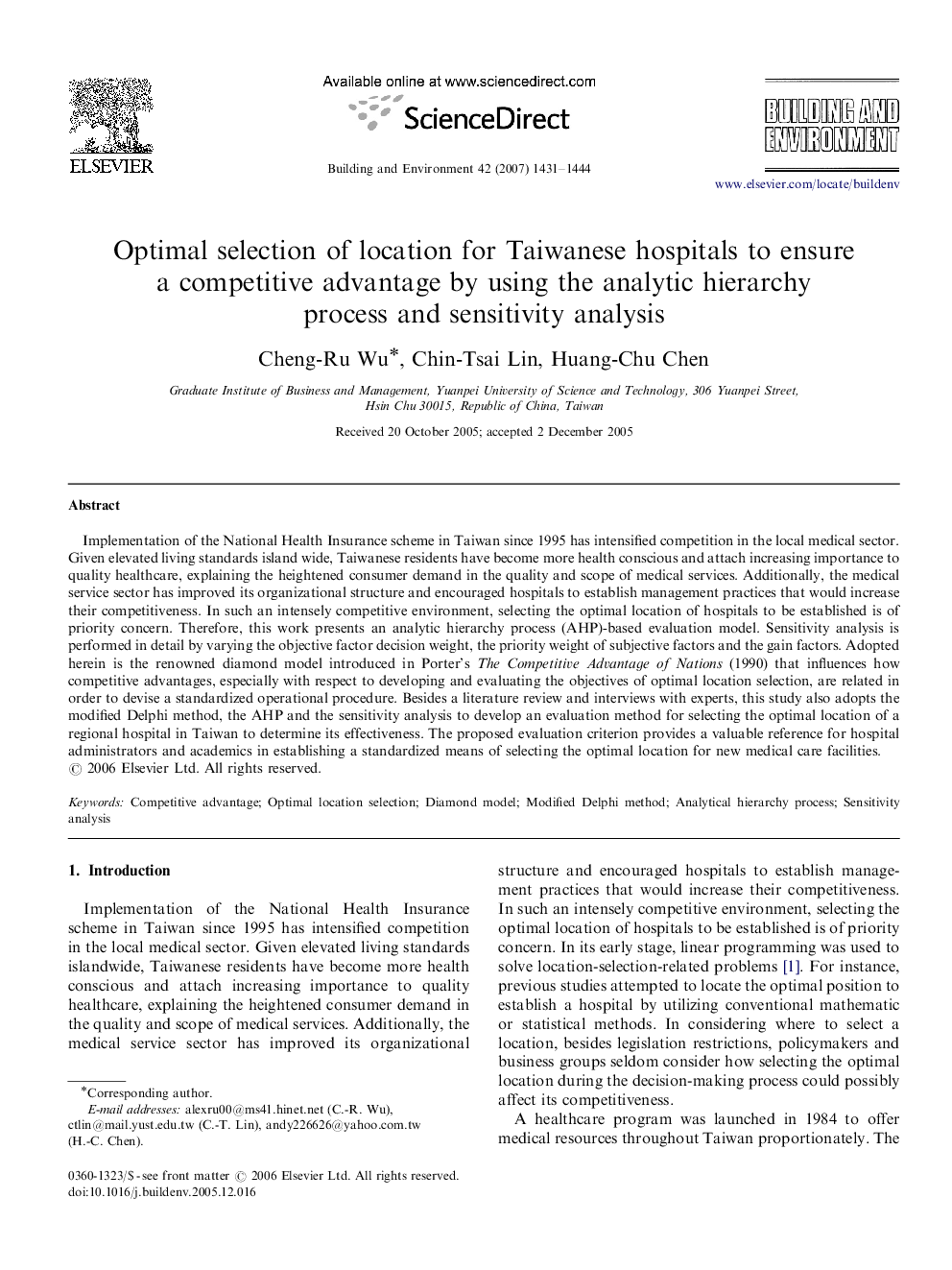| Article ID | Journal | Published Year | Pages | File Type |
|---|---|---|---|---|
| 250070 | Building and Environment | 2007 | 14 Pages |
Implementation of the National Health Insurance scheme in Taiwan since 1995 has intensified competition in the local medical sector. Given elevated living standards island wide, Taiwanese residents have become more health conscious and attach increasing importance to quality healthcare, explaining the heightened consumer demand in the quality and scope of medical services. Additionally, the medical service sector has improved its organizational structure and encouraged hospitals to establish management practices that would increase their competitiveness. In such an intensely competitive environment, selecting the optimal location of hospitals to be established is of priority concern. Therefore, this work presents an analytic hierarchy process (AHP)-based evaluation model. Sensitivity analysis is performed in detail by varying the objective factor decision weight, the priority weight of subjective factors and the gain factors. Adopted herein is the renowned diamond model introduced in Porter's The Competitive Advantage of Nations (1990) that influences how competitive advantages, especially with respect to developing and evaluating the objectives of optimal location selection, are related in order to devise a standardized operational procedure. Besides a literature review and interviews with experts, this study also adopts the modified Delphi method, the AHP and the sensitivity analysis to develop an evaluation method for selecting the optimal location of a regional hospital in Taiwan to determine its effectiveness. The proposed evaluation criterion provides a valuable reference for hospital administrators and academics in establishing a standardized means of selecting the optimal location for new medical care facilities.
